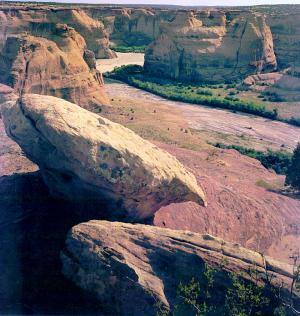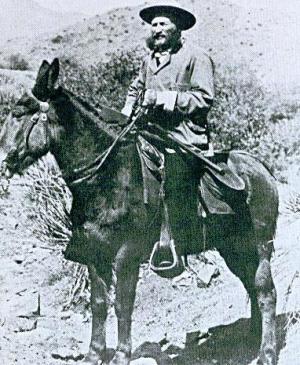Encounters between the United States Army and American Indians occurred in many places throughout the nineteenth century. Sometimes the encounters were peaceful, but other times the two diverse cultures clashed.
Canyon de Chelly, Arizona

This Navajo citadel was the scene of climatic events in the conquest of the Navajo Indians by the U.S. Army. Col. Christopher C. "Kit" Carson’s invasion of this bastion of Navajo defenses in the winter of 1863 - 1864 was a final blow that convinced most of the tribe to surrender.
Some 8,000 Navajos, three-fourths of the tribe, participated in the tragic "Long Walk" across New Mexico to Bosque Rendondo.
In 1868, after four years of exile, they were allowed to return to their homeland. The site is operated by the National Park Service.
Turret Peak, Arizona

General George Crook
The Battle of Turret Peak in south central Arizona was one of the pivotal fights that broke the backs of the Apaches and Yavapais in their efforts to resist white encroachment into their lands.
Fought on March 27, 1873, the battle of Turret Peak formed part of Gen. George Crook’s Tonto Basin campaign to force the Apaches and Yavapais to submit to reservations.
Capt. George Randall, leading a small force including Apache scouts, surprised a rancheria ensconced near the crest of Turret Peak. The battle at Turret Peak proved to the Indians that there was no sanctuary from the soldiers.
Two weeks later, most of the Apaches and Yavapais surrendered to Crook at Camp Verde, Arizona. The site is within the jurisdiction of the National Forest Service.
Native American History Related Articles
- Indian Wars Of The Old West: Arizona, Part 1
- Indian Wars Of The Old West: Arizona, Part 2
- Indian Wars Of The Old West: Arizona, Part 3
- Indian Wars Of The Old West: Colorado, Part 1
- Indian Wars Of The Old West: Colorado, Part 2
- Indian Wars Of The Old West: Montana, Part 1
- Indian Wars Of The Old West: Montana, Part 2
- Indian Wars Of The Old West: South Dakota
- Indian Wars Of The Old West: Texas
- Indian Wars Of The Old West: Wyoming

